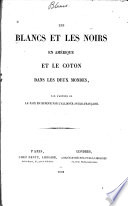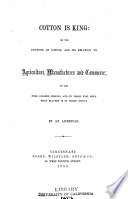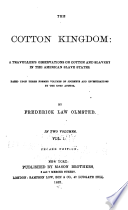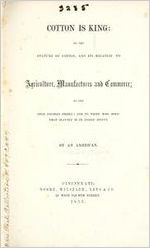Description
Exhibited: "America transformed. Part 1: the United States expands westward," organized by the Norman B. Leventhal Map & Education Center at the Boston Public Library, 2019.Shows dominant and subordinate cotton districts and subsidiary slave districts.Relief shown by hachures."The data for this map are mainly derived from the United States Census of 1850."From: Frederick Law Olmsted's The Cotton Kingdom. New York: Mason Brothers, 1861.America Transformed: This statistical map addresses the importance of cotton agriculture in the economy before the American Civil War. It represents agricultural productivity rather than distribution and density of cotton cultivation by mapping two variables: productivity of cotton per enslaved laborer (blue, yellow, or red) and ratio of enslaved people to freemen (solid versus dashed horizontal lines). The map accompanied landscape architect Frederick Law Olmsted’s published account of his travels through the South during the 1850s. Hired by the "New York Times" as a journalist to report his observations about the region’s economy, he argued that chattel slavery was inefficient for cotton production.
Image
Maps
McLellan, David, b. ca. 1825Mason BrothersOlmsted, Frederick Law, 1822-1903
No known copyright restrictions.No known restrictions on use.








![Letter from William Lloyd Garrison, Boston, [Mass.], to Joseph Pease, Sept. 30, 1840 Letter from William Lloyd Garrison, Boston, [Mass.], to Joseph Pease, Sept. 30, 1840](https://d2l9jrtx1kk04i.cloudfront.net/122e8e138c51c4adc27bea1d3c11627e93c6a55e.png)






